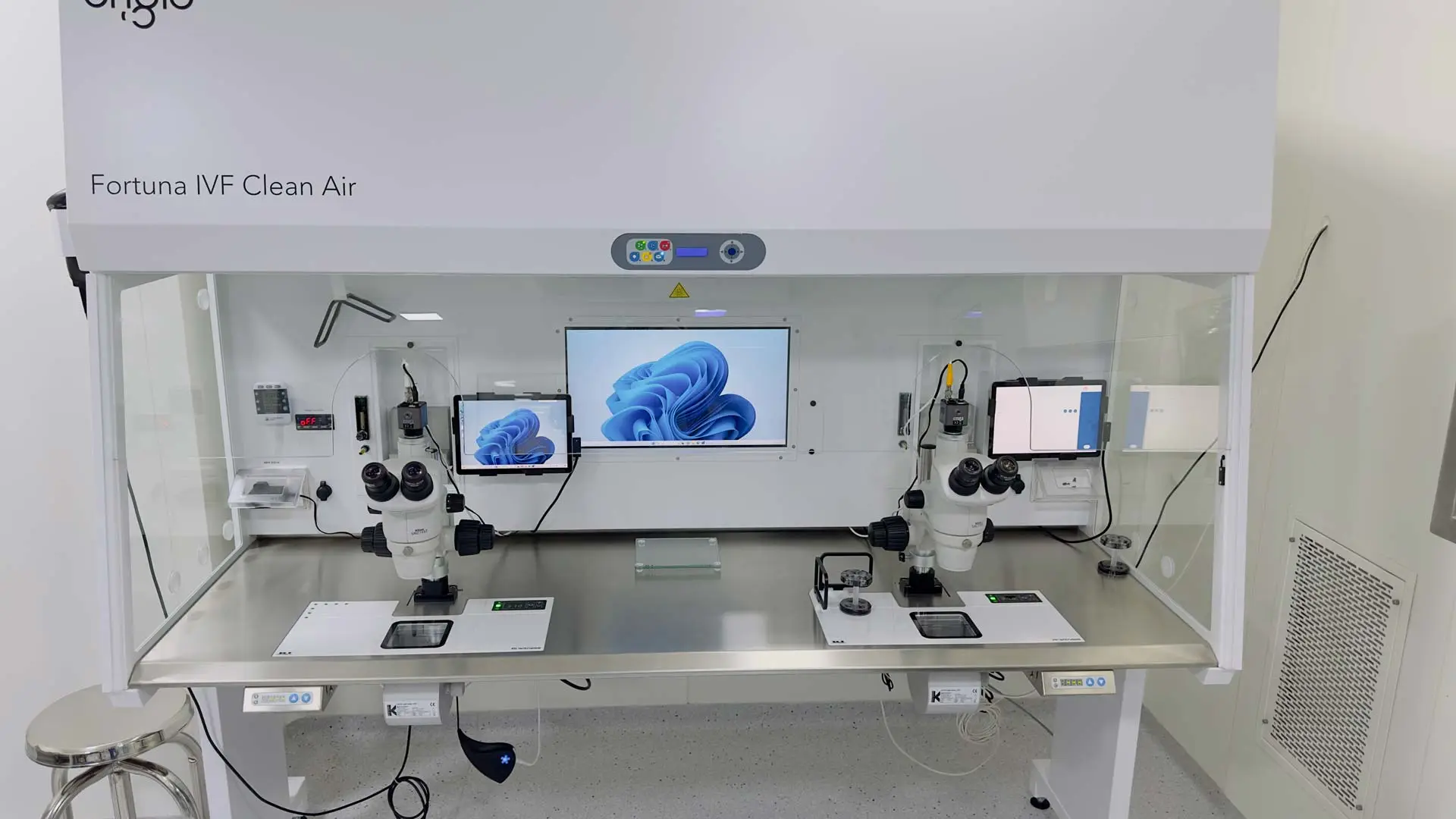Physiological Intracytoplasmic Sperm Injection (PICSI)
Advances in fertility treatments have revolutionised the way doctors help couples achieve pregnancy. PICSI treatment represents a significant advancement in assisted reproductive technology, offering enhanced sperm selection methods for couples struggling with infertility. This specialised procedure builds upon traditional fertility treatments to provide more precise and effective results.
What is PICSI?
PICSI treatment is a specialised technique that enhances the standard ICSI procedure by using hyaluronic acid to select the most suitable sperm for fertilisation. This method mimics the natural selection process that occurs in the female reproductive tract. The technique identifies explicitly mature sperm cells that have completed their full development, making them more likely to have intact DNA and proper chromosome numbers.
How PICSI Works
The PICSI treatment process enhances the traditional ICSI method by incorporating biological selection mechanisms that mirror natural fertilisation.
Hyaluronan Binding
Hyaluronan, a naturally occurring substance in the female reproductive tract, plays a crucial role in the PICSI procedure. This biological polymer serves as a natural selector of mature sperm cells. The process works because only fully mature sperm possess the specific receptors needed to bind with hyaluronan. These receptors appear during the final stages of sperm development, making them reliable indicators of sperm maturity.
Sperm Selection Process
The selection process in PICSI treatment involves careful observation of sperm behaviour when exposed to hyaluronan. During the procedure, the bound sperm exhibit a distinct movement pattern, often described as a ‘helicopter-like’ rotational motion. This unique behaviour occurs because while the sperm head remains attached to the hyaluronan, its tail continues to move vigorously. This creates a characteristic spinning motion that embryologists can easily identify.
| Sperm Behaviour | Significance | Selection Status |
|---|---|---|
PICSI Procedure Steps
The PICSI procedure follows a precise sequence of steps:
Preparation Phase
- Hydration of a special PICSI dish containing hyaluronan microdots
- Processing of semen sample
- Temperature control at 36.8°C
Selection Phase
- Addition of processed sperm to hyaluronan drops
- The observation period of 5 minutes minimum
- Identification of bound sperm
Collection Phase
- Careful extraction of selected sperm
- Transfer to the handling medium
- Final morphological assessment
Implementation Phase
- Sperm immobilisation
- Precise injection into the egg
- Monitoring of the fertilisation process
PICSI vs. Standard ICSI
The primary distinction between PICSI and standard ICSI lies in their sperm selection methods. Here’s a detailed comparison:
| Aspect | PICSI | Standard ICSI |
|---|---|---|
Benefits of PICSI
The procedure’s unique approach to sperm selection has shown remarkable improvements in various aspects of fertility treatment outcomes.
Improved Embryo Quality
Studies have shown that embryos created through PICSI demonstrate superior quality markers compared to traditional methods.
Key quality improvements include:
- Higher blastulation rates
- Better embryo development patterns
- Increased proportion of top-grade embryos
- Enhanced implantation potential
Higher Pregnancy Rates
The sophisticated sperm selection process in PICSI treatment contributes to improved pregnancy outcomes. The procedure’s ability to identify mature sperm with optimal DNA integrity directly influences successful fertilisation and pregnancy rates.
| Outcome Measure | PICSI Advantage |
|---|---|
Reduced Miscarriage Risk
One of the most significant benefits of PICSI treatment is its impact on reducing miscarriage rates. This improvement is particularly notable in specific patient groups:
Age-related Benefits
- Shows particular effectiveness in women aged 35 and above
- Demonstrates reduced chromosomal abnormalities
- Offers better outcomes for advanced maternal age cases
DNA Quality Impact
- Selects sperm with superior DNA integrity
- Reduces the risk of DNA fragmentation
- Minimises chromosomal abnormalities
Who is PICSI Recommended For?
Doctors carefully evaluate several factors when recommending PICSI treatment to patients.
Male Factor Infertility Cases
Doctors typically recommend PICSI when patients demonstrate the following:
- Reduced sperm maturity (HBA score below 65%)
- High levels of DNA fragmentation
- Poor sperm morphology despite normal motility
- Previous unsuccessful ICSI attempts
Advanced Maternal Age
Women of advanced maternal age often experience improved outcomes with PICSI treatment compared to conventional ICSI. The benefits become particularly evident in specific age groups:
| Age Group | PICSI Benefits |
|---|---|
Recurrent Pregnancy Loss
Couples experiencing recurrent pregnancy loss represent another group that may benefit significantly from PICSI treatment. The procedure offers several advantages for these patients:
Enhanced Selection Process
- Identifies sperm with better DNA integrity
- Reduces chromosomal abnormality risks
- Improves embryo quality
Improved Outcomes
- Significantly lower miscarriage rates
- Better implantation success
- Higher ongoing pregnancy rates
The treatment becomes especially relevant when:
- Previous ICSI cycles have resulted in poor embryo development
- Couples have experienced unexplained implantation failures
- Sperm samples show signs of compromised DNA integrity
- Standard treatments have not produced the desired outcomes
Comparison with Standard ICSI
PICSI treatment demonstrates distinct advantages when compared to standard ICSI procedures. The following are key outcome differences between the two treatments:
1. Technique:
- Standard ICSI:
Sperm selection based on motility and morphology
An embryologist chooses sperm visually under a microscope
- PICSI:
Uses hyaluronic acid (HA) binding for sperm selection
Mimics natural sperm selection process in the female reproductive tract
2. Sperm Selection Process:
- Standard ICSI:
Subjective selection by the embryologist
Based on the sperm’s appearance and movement
- PICSI:
More objective selection method
Sperm that bind to HA are considered more mature and have better DNA integrity
3. Potential Benefits of PICSI:
- May reduce the risk of chromosomal abnormalities in embryos
- Potentially higher fertilisation rates than standard ICSI
- Possible improvement in embryo quality
- May decrease miscarriage rates than standard ICSI
- Potentially beneficial for couples with previous IVF failures or high sperm DNA fragmentation
- Clinical pregnancy rates show notable improvement, particularly in cases with previous ICSI failures.
Summary
PICSI treatment stands out as a powerful tool in modern fertility care, offering couples new hope through its advanced sperm selection method. Scientific evidence shows clear benefits, including higher pregnancy rates and better embryo quality, particularly for patients dealing with male factor infertility or previous unsuccessful treatments. The procedure’s ability to select mature sperm cells through hyaluronic acid binding leads to better DNA integrity and reduced miscarriage risks, making it a valuable option for many couples facing fertility challenges.
HAVE MORE QUERIES ABOUT PICSI AND ITS TREATMENTS? ASK OUR EXPERTS
Contact UsFAQ's








